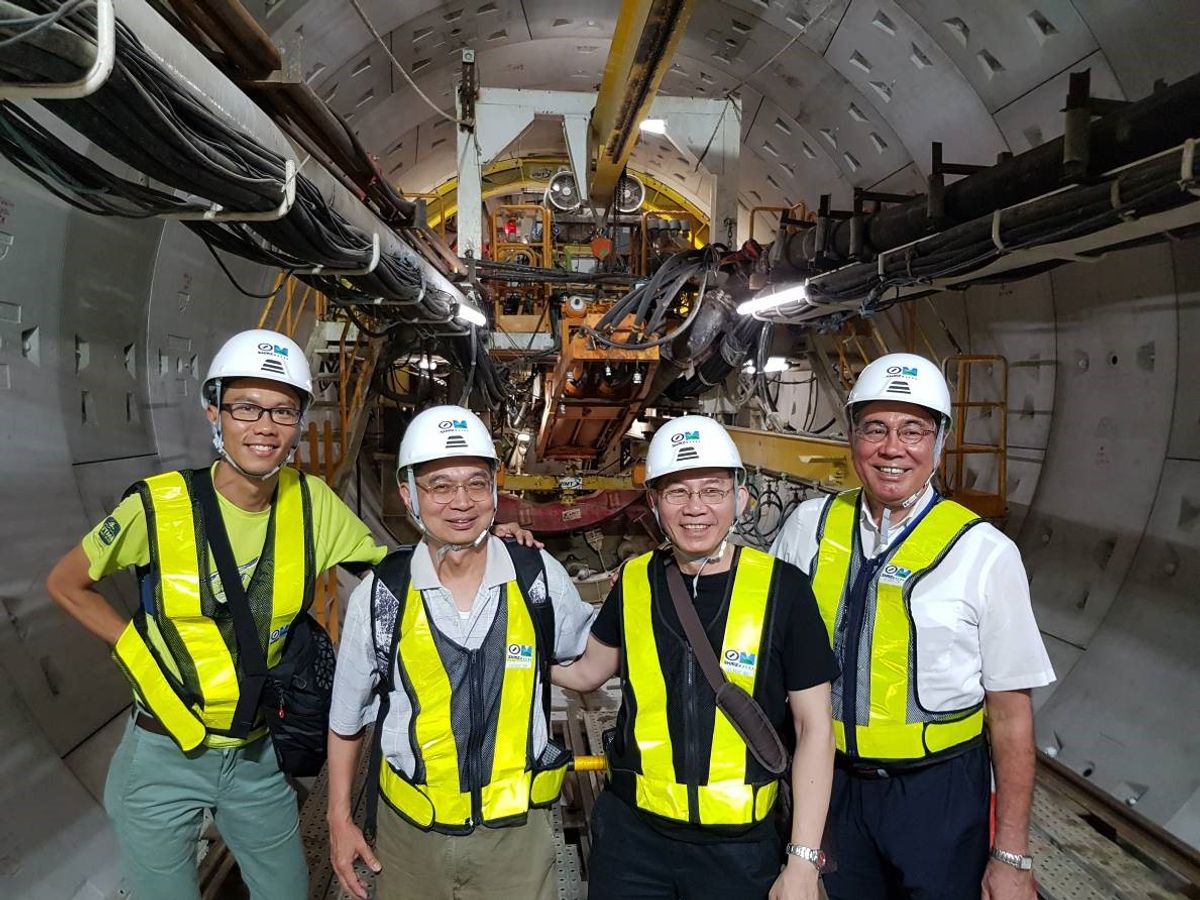 ĐƠN VỊ TỔ CHỨC
ĐƠN VỊ TỔ CHỨC
• Vietnamese Society for Soil Mechanics & Geotechnical Engineering (VSSMGE), Vietnam
• Ho Chi Minh City University of Technology (HCMUT), Ho Chi Minh City, Vietnam
• National Taiwan University of Science and Technology (NTUST), Taiwan
Hội Cơ Học Đất và Địa Kỹ Thuật Công Trình Việt Nam (VSSMGE), Trường Đại học Bách khoa TP Hồ Chí Minh, và Trường Đại học Khoa học Công nghệ Đài Loan đã tổ chức Hội thảo Quốc tế “Phương pháp số trong Địa kỹ thuật ” NAG2018, vào ngày 22 tháng 3 năm 2018 tại Thành phố Hồ Chí Minh. Đây là lần thứ hai, Hội thảo quốc tế này được tổ chức tại Việt Nam. Hội thảo lần thứ nhất NAG2015 được tổ chức vào ngày 20 tháng Tám8 năm 2015 tại Hà Nội, với 135 khách tham dự, từ bảy quốc gia và vùng lãnh thổ tham dự, gồm Singapore, Đài Loan, Thái lan, Trung Quốc, Canađa, Pháp và Việt Nam. Hội thảo lần thứ hai NAG2018 đã một lần nữa thành công tốt đẹp với 120 khách và tác giả đến từ 17 quốc gia và vùng lãnh thổ bao gồm Đài Loan, Đức, Hàn Quốc, Nhật Bản, Nga, Ấn Độ, Nepal, Gambia, Singapore, Hàn Quốc, Hong Kong, Malaysia, Indonesia, Thái Lan, Anh, Trung Quốc và Việt Nam. NAG2018 lần này tạo ra một diễn đàn cho người sử dụng các chương trình tính toán và các phương pháp số khác nhau trong địa kỹ thuật công trình, trao đổi kiến thức và kinh nghiệm, từ kết quả lý thuyết đến các ứng dụng kỹ thuật. Sau hội thảo, vào ngày 23/3/2018, Ban tổ chức Hội thảo đã tổ chức tham quan công trường Metro Tuyến số 1, TP Hồ Chí Minh, với tên chính thức HCM City Urban Railway Construction Project – Line 1 (Ben Thanh-Suoi Tien Section), Package Cp1b. Đây là một trong những tuyến Metro quan trọng được thi công lần đầu tiên bằng phương pháp TBM tại Việt Nam.
Tại hội thảo NAG2018 lần này, những bài sau đây đã được trình bày:
1. Rolf Katzenbach & Steffen Leppla (Germany). The important role of powerful numerical tools for highly qualified sustainable construction in geotechnical engineering.
2. Chang-Yu Ou (Taiwan). Application of numerical methods in the design of deep excavation.
3. JaeSeok Yang (Korea) & Joseph Stuart Birnie (UK). Numerical analysis of the shaft excavation and the effects on adjacent structures.
4. William Cheang (Singapore) & Phung Duc Long (Vietnam). Geotechnical analysis of soft soil foundations improved by PVDs and vacuum preloading.
5. Tsai, Yuan-Yao et al. (Taiwan). Sophisticated soil sampling, finite element geotechnical analysis and nonlinear seismic design for underground structures in Jakarta MRT Project.
6. Phung Duc Long (Vietnam). Settlement analysis for piled raft foundations – A case study
7. Tran Viet Thai & Huynh Quoc Vu (Vietnam). Back analysis of a deep excavation in the new
alluvial sediment layer in Ho Chi Minh City.
8. Takeshi Satoh (Japan). The analytical prediction by FEM and the observational procedure for
the reclamation work at log pond adjacent to facilities.
9. Syiril Erwin & Chang-Yu Ou (Taiwan). Study of Taipei MRT tunnel deformations due to adjacent excavation in 3D analysis.
10. Alvin K M Lam (Hong Kong). An engineering solution for a hillside development in Hong Kong.
11. Tomoya Tominaga et al. (Japan). Verification of reduction factor of sectional properties of steel sheet pile due to lack of interlock integrity.
12. Phan Tran Thanh Truc (Vietnam) & Takenori Hino (Japan). Valuate the effect of embankment height and pile spacing to the behavior of the geosynthetic – reinforced piled embankment using FEM.
13. Nguyen Thi Yen et al. (Vietnam). Deep excavation design – A case study in Hanoi Urban
Railway.
14. Amadou Jallow et al. (Taiwan). Analysis of creep and consolidation settlement induced by EPB shield tunneling.
15. Pham Huy Giao (Thailand). Numerical analysis of Mekong delta land subsidence and possible
different views between geotechnical engineers and journalists on this matter.
16. Le Ba Vinh et al. (Vietnam). Study on the settlement of raft foundations by different methods.
17. Kazuhiro Kaneda et al. (Japan). Study of vertical bearing capacity of spread foundation using
rigid plastic finite element method.
18. Nguyen Thuy Mai Khanh (Hong Kong). Numerical analysis – What does the future hold?
19. Alieu Jagne & An-Jui Li (Taiwan). Investigations of slurry supported trench stability under
seismic conditions.
20. Sun Yue (Japan). Study on numerical analysis method of slope deformation due to rainfall.
21. Alan Lolaev et al. (Russia). Application of numerical methods for the optimization of the
technological parameters of the tailing dam alluvium in permafrost region.
22. Phan Dung & Nguyen Van Duyet (Vietnam). Nonlinear analysis of single pile under axial and
lateral loading using p-delta curve by transfer matrix method.
23. Akash Gupta et al. (India). Model experiments and numerical modeling of interference effect
of square footings on geocell reinforced sand beds.
24. Duong Hong Tham (Vietnam). A suggested numerical solution for non-linear consolidation
settlement using second – order Runga – Kutta algorithm.
25. Park Sung-Sik et al. (Korea). A coupled Eulerian-Lagrangian approach for large deformation
of soils.
26. C.B. Qin & S.C. Chian (Singapore). Kinematic analysis of seismic slope stability using discretisation technique.
27. Hua Thanh Than et al. (Vietnam). Effection of liquefaction by earthquake due to pore water pressure in sand.
28. S.C. Chian et al. (Singapore). Modelling of ground settlement using photogrammetry.













Phùng Đức Long,
Chủ tịch Hội Cơ Học Đất và Địa Kỹ Thuật Công Trình Việt Nam.
E-mail: [email protected]



